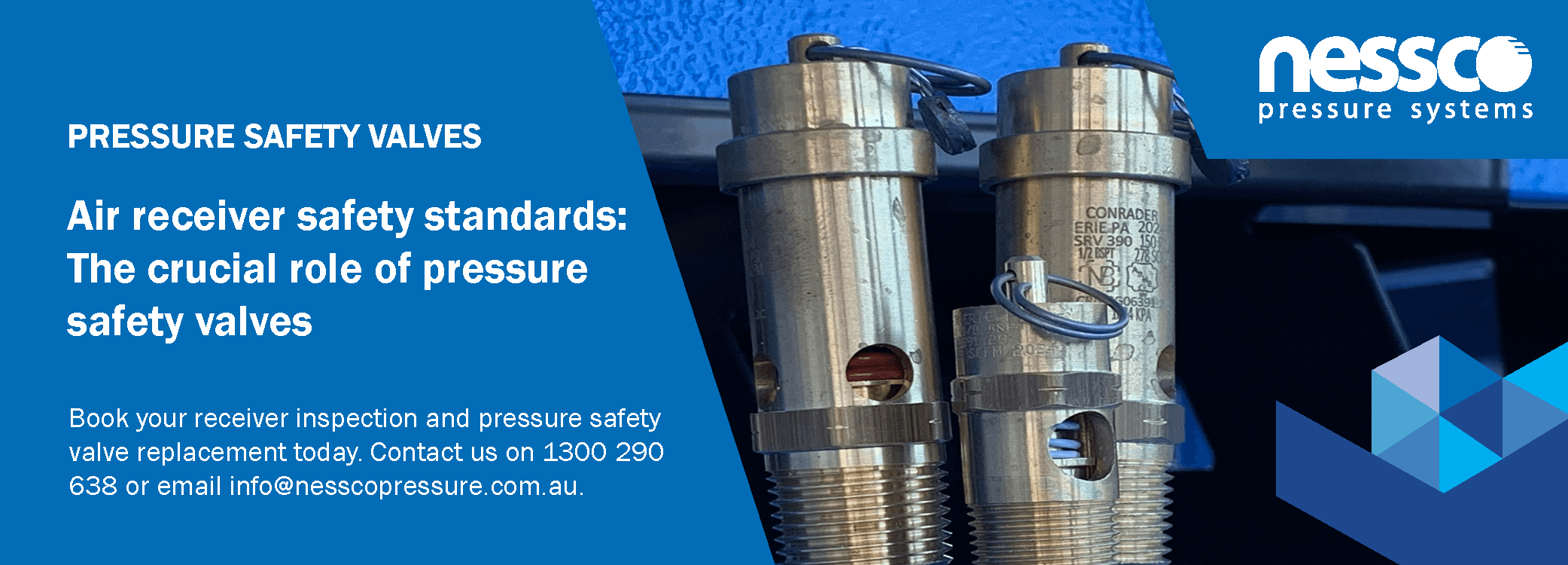
Your compressed air receiver contains a critical safety component called a pressure safety valve (PSV).
This essential valve automatically releases air from the receiver tank if internal pressure exceeds a safe limit – preventing dangerous overpressure that could cause the tank to rupture – or in extreme cases, explode.
How does a pressure safety valve work?
Essentially, a pressure safety valve works by automatically opening when the air pressure inside your air receiver tank exceeds a preset threshold (usually 10% above the maximum allowable working pressure). Once pressure returns to a safe level, the valve closes again.
Standards often allow for a certain amount of overpressure to ensure the safety valve can handle the required flow. For example, a pressure safety valve might be set to open at the design pressure and then reach its full capacity at 10% overpressure.
It is important to note; the PSV should be sized at or below the Maximum Allowable Working Pressure (MAWP) of the vessel. For example, a 1,000 kPa design pressure vessel should have a 1,000 kPa set pressure safety or below (not anything higher, i.e. not a 1,100 kPa PSV).
Why are pressure safety valves important?
The PSV plays a critical role in ensuring your compressed air system always operates within safe pressure limits.
Here’s why you can’t afford to ignore it:
- Helps prevent tank ruptures and explosions
The PSV helps prevents ruptures and explosions: Over-pressurisation can turn your air receiver into a dangerous piece of equipment. A PSV releases excess air to avoid this pressure build up.
- Ensures compliance with Australian safety standards
In Australia, pressure vessels (including air receivers) are regulated under AS 1210:2010 (Pressure Vessels) and AS 3788:2024 (Inspection, Testing, and Maintenance). Failure to comply with the inspection and testing schedules outlined in these standards can lead to legal penalties, infringements, and operational shutdowns.
- Protects people and property
A failed PSV can lead to catastrophic equipment damage, serious injuries, or worse.
Why your pressure safety valve must be replaced every four years
Under Australian Standards, and Safe Work Australia and WorkSafe WA regulations, all PSVs must be replaced, or bench tested every four years. In most cases, it is more feasible and cost effective to replace PSVs rather than bench test.
These rules exist for the following reasons:
- Wear and tear: PSVs are mechanical and can corrode, stick, or fail over time.
- Quality assurance: Even if they haven’t activated, a PSV’s springs, seals, and internals degrade.
- Regulatory compliance: Insurance and safety inspections require proof of PSV maintenance or replacement every four years.
- AS 3788:2024 compliance: This standard outlines inspection and testing intervals for pressure vessels, including pressure safety devices.
If you’re managing a workshop or industrial business, the four-year PSV replacement is not just a recommendation – it’s a legal and safety requirement.
When was your pressure safety valve last replaced?
If you’re not sure when your pressure safety valve was last replaced or bench tested, or if you haven’t had your air receiver inspected on the required two-year inspection cycle, it’s time to act.
Stay compliant. Stay safe.
Book your receiver inspection and pressure safety valve replacement today. Contact our service team on 1300 290 638 or email info@nesscopressure.com.au.

